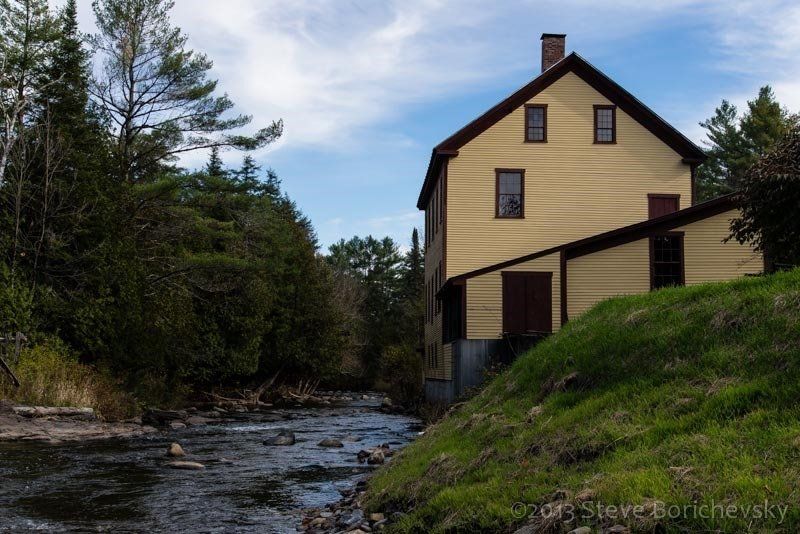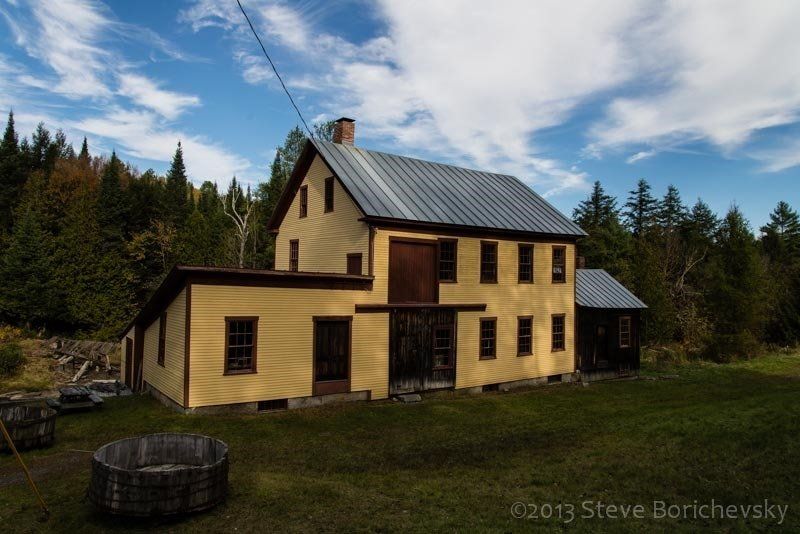Alexander Jack, the inventor from Paisley
We tend, in our ponderings on the Mill, to focus our attention on the recent past. Ben Thresher was such a remarkable man and a curious character. I find, however, that much of my fascination with Ben's Mill is its whole history and what it has meant to the town of Barnet. Thresher was not the only notable and intriguing person to be associated with the place.
Prior to 1872, when the present building was constructed, the south bank of the Stevens River was a hive of activity. The mills that stood before helped to build Barnet Center. An up and down sawmill was erected on the Ben's Mill site in 1836 by Bartholomew Carrick. It was paired with a tannery owned by James Shaw down the river who leased the land to Carrick, provided he build a dam they could share.
From 1837 to 1855, Carrick leased the rights to James Goodwillie. The mill under James Goodwillie cut the lumber for the present day Barnet Center church and for many of the barns and homes near the mill. Whether it was due to disrepair, fire or flood this older mill building was pronounced demolished around 1855. And so the site sat for a while patiently waiting for Alexander Jack.
In the meantime, Vermont's economy was changing. The lush green pastureland and the encouragement of the Vermont Legislation though tax credits for raising wool moved Vermont towards sheep raising. The wool industry flourished in New England and because of this, Ben's Mill began its next life.
Alexander Jack was born in Paisley, Scotland in 1810. He became an apprentice there to a textile block cutter, dyer and printer before coming to the United States. In Lowell, Massachusetts, in the 1850's, he married Janet Lackie, a woman from Barnet, Vermont. They moved to Milton Mills, New Hampshire. Not long after, Alexander Jack began inventing devices to make dying wool easier.
Jack's first invention was a block printer that secured strips of wood over the wool in a plaid pattern so dye wouldn't penetrate the wool where the strips were placed. When the cloth dried, the dyer would then loosen the device and place it over the colored cloth so the undyed strips could be dipped in another color creating a striped pattern... It is similar to today's silk-screening using the resist method. This was important to all the Scottish living in New England as different clans tended toward different tartans or plaids.
In 1870, Alexander Jack bought the strip of land that Ben's Mill sits on today. He paid $125 for the land from the Shaw tannery and Carrick mill. The next spring, he paid $350 for the house across the street where he lived with his wife, Janet and his son, James. Jack built the mill in 1872 and began his own Dye and Print Works. He was an ingenious inventor of many wool dying, drying and embossing techniques. The first floor of the main mill building would have been the woodworking shop where the dye frames, dye vats and other pieces of equipment were made.
The second floor was the printing room. This explains the rather extravagant plaster on the ceiling, It would have kept the cloth cleaner. Throughout his career, Jack patented his inventions for dying and drying cloth and sheepskins. He devised a cold dye method for sheep skins so the skin wouldn't be damaged by hot dye and a hydro extractor. The extractor spun a spindle which in turn spun a cage at speeds up to 1,000rpm drawing water out of the cloth without stretching and misshaping. These devices were not only used by Jack, but were manufactured at the mill in Barnet. Alexander Jack died at the age of 77 on July 25, 1887.
Ben's Mill must have a certain attraction to people who want to forge their own way in the world. James Shaw, Bartholomew Carrick, James Goodwillie and Alexander jack are just four of those in the line who loved the place.
When I am there in the mill listening to the rush of water, smelling the years of dust and ash, my eyes falling on the sale walls Alexander Jack erected for his dye Works, I understand why so many have worked so hard for the place. There is just something about it!
Reference: Johnson, Jon. Historic American Engineering Record for Ben Thresher's Mill. 1979. Photo used with the permission of the Billings Farm and Museum, Woodstock, VT.


